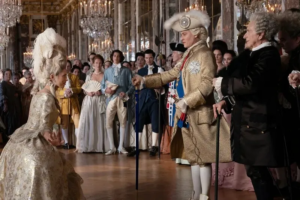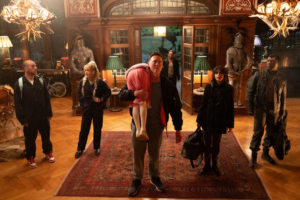Reviewed by GREG KING
Documentary
Director: Davis Guggenheim.

From veteran documentary filmmaker Davis Guggenheim comes this detailed look at Malala Yousafzai, the young Pakistani girl who, in October 2012, was shot in the head by the Taliban for daring to suggest that girls should be able to go to school and learn. When they came to power in Pakistan and Afghanistan, the extremist Taliban used a strict interpretation of Islam to ban girls from attending school. The repressive regime even blew up many local schools.
Malala survived her injuries and became an outspoken advocate for girls’ education. She has rubbed shoulders with heads of state, including Queen Elizabeth and President Obama, and pop stars like Bono. In 2014 she also became the youngest ever winner of the Nobel Peace Prize in recognition of her efforts.
Guggenheim is best known for directing the 2006 Oscar winning film An Inconvenient Truth, basically a filmed lecture from Al Gore about global warming and climate change, but he has also tackled other socially important topics such as the flawed US public education system in the eye opening and disturbing 2010 documentary Waiting For Superman.
Guggenheim has been granted access to Malala and her family, for this intimate portrait of a young girl who seemingly is unaffected by her fame and her time in the spotlight. The film follows her as she attempts to adapt to a new life and new culture in Birmingham in Britain, where her family now lives. She comes across as an eloquent and impassioned speaker and advocate.
We get brief glimpses of her two brothers and her mother, who struggles to assimilate to her new life in Britain, and seems to prefer to remain out of the picture for much of the time. They seem like a normal happy family, playing and joking and gently teasing each other. In particular Guggenheim has also focused on her father Ziauddin, the “he” of the title, himself a fiery and outspoken advocate for female education which has also made him a target for the Taliban. “Education gives you the power to question,” he states. His influence is obvious, as is his love and pride for his outspoken daughter. Malala herself was named after a Pashtun folk heroine who was an inspirational figure in the Anglo-Afghan War of 1880 and who died a martyr on the battlefield.
Guggenheim draws upon newsreel footage, interviews, and some dramatic re-enactments to tell the story of Malala’s bravery and courage and her inspirational quest to promote schooling for girls around the world. The film even features some intricate, highly stylised and superbly animated sequences from Jason Carpenter depicting Malala’s life with her family in the picturesque Swat Valley.
Malala’s story is an inspirational one and worth of the documentary treatment, but it is let down a little by the structure of the film. The chronology is too fragmented and the presentation of information comes across as disjointed. The film would have been much better and more accessible if Guggenheim and his team of editors had adopted a more linear presentation of the wealth of material available.
★★★



